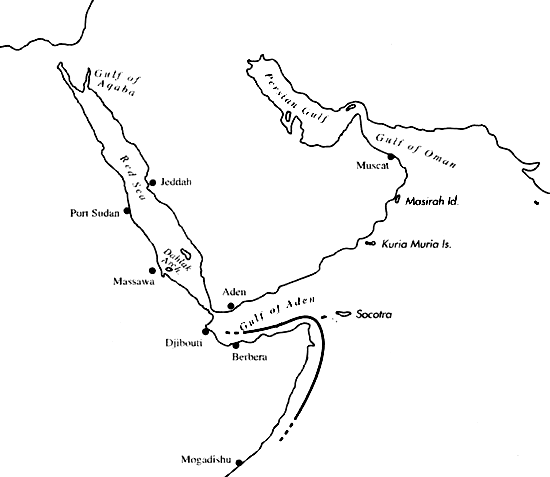
Skip Navigation Links
View access keys for this site.

Range: Somalia.
Description: Small to moderately small, light to moderately light. Last whorl conical, outline slightly convex adapically and straight towards base; left side may be slightly concave above base. Shoulder angulate or slightly carinate. Spire of low to moderate height, outline concave. Larval shell of about 2 whorls, maximum diameter about 0.9- 1 mm. First 0.25-1.25 postnuclear whorls weakly to sometimes obsoletely tuberculate. Teleoconch sutural ramps concave, with prominent radial threads; early ramps with 1 adaxial spiral groove or with 1-2 increasing to 2-3 equally spaced spiral grooves, later ramps with obsolete spiral sculpture. Basal half of last whorl with punctate to axially striate spiral grooves; intervening ribbons grade to ribs at anterior end.
| Shell Morphometry | ||
|---|---|---|
| L | 22-36 mm | |
| RW | 0.03-0.11 g/mm | |
| RD | 0.50-0.56 | |
| PMD | 0.87-0.95 | |
| RSH | 0.08-0.14 | |
Ground colour white, last whorl usually shaded with pink. Last whorl with orangish brown to brown axial blotches, fusing into an interrupted or solid spiral band on each side of centre. Closely spaced spiral rows of alternating reddish brown and white dots and dashes extend from base to shoulder, sometimes obscured by spiral colour bands. Base orange to brown. Larval whorls grey to brown; following 2 sutural ramps of similar colour. Postnuclear sutural ramps with regularly aligned brown subsutural dots and orange-brown radial blotches that extend over outer margins and may fuse into an adaxial spiral band. Aperture pink to orange.
Habitat and Habits: "Deep water" (G. Raybaudi & da Motta, 1992).
Discussion: C. lizarum is similar to C. dictator, C. traversianus and C. stocki. C. dictator attains larger size and has a higher spire (RSH 0.17-0.26), more tuberculate postnuclear whorls (4-7), and distinct spiral grooves on its late sutural ramps. Its last whorl is generally encircled with 3 colour bands, its larval whorls are white, and its teleoconch spire lacks subsutural dots. C. traversianus is also larger, has a narrower last whorl (RD 0.45-0.48), a higher spire (RSH 0.14-0.20), more tuberculate postnuclear whorls (2.5- 4), and 3-4 distinct spiral grooves on its later sutural ramps. Its larval whorls are white, its teleoconch spire lacks subsutural dots, and its last whorl is not shaded with pink. C. stocki also attains larger size, has a higher, gradually sloping spire (RSH 0.16-0.18), more pronounced spiral sculpture on the later sutural ramps, a pale brown aperture, and a dark brown pattern that tends to fuse into an additional subshoulder band. However, obvious similarities in shape, sculpture, and pattern elements of their teleoconchs as well as in their larval shells suggest close relationship between C. lizarum and C. stocki.

C. lizarum range map
This section contains verbatim reproductions of the accounts of 316 species of Conus from the Indo-Pacific region, from Manual of the Living Conidae, by Röckel, Korn and Kohn (1995). They are reproduced with the kind permission of the present publisher, Conchbooks.
All plates and figures referred to in the text are also in Röckel, Korn & Kohn, 1995. Manual of the Living Conidae Vol. 1: Indo-Pacific Region.
The range maps have been modified so that each species account has it own map, rather than one map that showed the ranges of several species in the original work. This was necessary because each species account is on a separate page on the website and not confined to the order of accounts in the book.
Return to framed version (returns to search page)